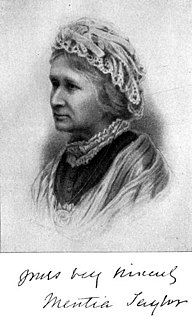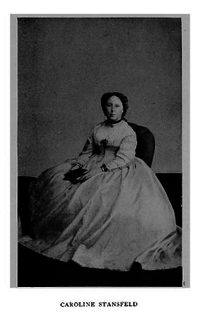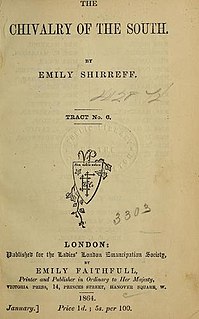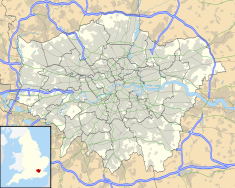
Kensington is an affluent district in the Royal Borough of Kensington and Chelsea in the West of Central London.

The Royal Borough of Kensington and Chelsea (RBKC) is an Inner London borough with royal status. It is the smallest borough in London and the second smallest district in England; it is one of the most densely populated administrative regions in the United Kingdom. It includes affluent areas such as Notting Hill, Kensington, South Kensington, Chelsea, and Knightsbridge.

Notting Hill is a district of West London, England, in the Royal Borough of Kensington and Chelsea. Notting Hill is known for being a cosmopolitan and multicultural neighbourhood, hosting the annual Notting Hill Carnival and Portobello Road Market. From around 1870, Notting Hill had an association with artists.

Moncure Daniel Conway was an American abolitionist minister and radical writer. At various times Methodist, Unitarian, and a Freethinker, he descended from patriotic and patrician families of Virginia and Maryland but spent most of the final four decades of his life abroad in England and France, where he wrote biographies of Edmund Randolph, Nathaniel Hawthorne and Thomas Paine and his own autobiography. He led freethinkers in London's South Place Chapel, now Conway Hall.

Kensington Palace is a royal residence set in Kensington Gardens, in the Royal Borough of Kensington and Chelsea in London, England. It has been a residence of the British royal family since the 17th century, and is currently the official London residence of the Duke and Duchess of Cambridge, the Duke and Duchess of Gloucester, the Duke and Duchess of Kent, and Prince and Princess Michael of Kent.

Holland Park is an area of Kensington, on the western edge of Central London, that contains a street and public park of the same name. It has no official boundaries but is roughly bounded by Kensington High Street to the south, Holland Road to the west, Holland Park Avenue to the north, and Kensington Church Street to the east. Adjacent districts are Notting Hill to the north, Earl's Court to the south, and Shepherd's Bush to the northwest.

Gloucester Road (B325) is a street in the Royal Borough of Kensington and Chelsea of London. It runs north–south between Kensington Gardens and the Old Brompton Road at the south end.

Ethel Bentham, was a progressive doctor, a politician and a suffragist in the United Kingdom. She was born in London, educated at Alexandra School and College in Dublin, the London School of Medicine for Women and the Rotunda Hospital.

Peter Alfred Taylor was a British politician, anti-vaccinationist and radical.

Campden Hill is a hill in Kensington, West London, bounded by Holland Park Avenue on the north, Kensington High Street on the south, Kensington Palace Gardens on the east and Abbotsbury Road on the west. The name derives from the former Campden House, built by Baptist Hicks, 1st Viscount Campden whose country seat was Campden House in the Gloucestershire town of Chipping Campden.

Pinehurst Court is a portered Victorian mansion block at 1-9 Colville Gardens, just off Colville Terrace and near the Portobello Market in Notting Hill, London, England. The terrace was initially built in the 1870s by the builder George Frederick Tippett, as single family residences, but from the 1880s the houses began to be subdivided into flats. By 1928 the neighbourhood was described as "rapidly becoming poorer", and by 1935 as a "largely slum area". The gentrification of Notting Hill in the 1980s and 1980s greatly improved the character of the building, which now forms a part of one of London's most fashionable neighbourhoods.
The Kensington Proprietary Grammar School, colloquially referred to as the Kensington School, was an educational establishment founded in 1830 that is perhaps best remembered for being one of the founders of the Football Association in 1863.
Essex Street Chapel, also known as Essex Church, is a Unitarian place of worship in London. It was the first church in England set up with this doctrine, and was established when Dissenters still faced legal threat. As the birthplace of British Unitarianism, Essex Street has particularly been associated with social reformers and theologians. The congregation moved west in the 19th century, allowing the building to be turned into the headquarters for the British and Foreign Unitarian Association and the Sunday School Association. These evolved into the General Assembly of Unitarian and Free Christian Churches, the umbrella organisation for British Unitarianism, which is still based on the same site, in an office building called Essex Hall. This article deals with the buildings, the history, and the current church, based in Kensington.

Clementia Taylor was an English women's rights activist and radical.

Caroline Ashurst Stansfeld was a member of an important family of radical activists in mid-nineteenth-century England who supported causes ranging from women's suffrage to Italian unification. In 1844, she married Sir James Stansfeld (1820–1898), the future MP for Halifax and preeminent political advocate for the movement to repeal the Contagious Diseases Acts. She maintained a close friendship with Italian nationalist Giuseppe Mazzini, who wrote to her frequently and 1,500 of his letters to the family have been published in E.F. Richards’ collection: Letters to an English Family.

The Ladies' London Emancipation Society was an activist abolitionist group founded in 1863, which disseminated anti-slavery material to advance British understanding of the Union cause in the American Civil War as one pertaining to morality rather than territory. This was said to be the first national anti-slavery society for women.
Charlotte Manning was a British feminist, scholar and writer. She was the first head of Girton College.

Catherine Emily Pine was active in the women's suffrage movement in Britain. She took care of the suffragette Emmeline Pankhurst and her son Henry. Pine travelled with Pankhurst until she decided to move back to Britain permanently in 1924.
Lachlan Beg Mackintosh, 14th of Mackintosh was the chief of the Clan Mackintosh, a Scottish clan of the Scottish Highlands. He was also chief of the confederation of clans that was known as the Clan Chattan.

















